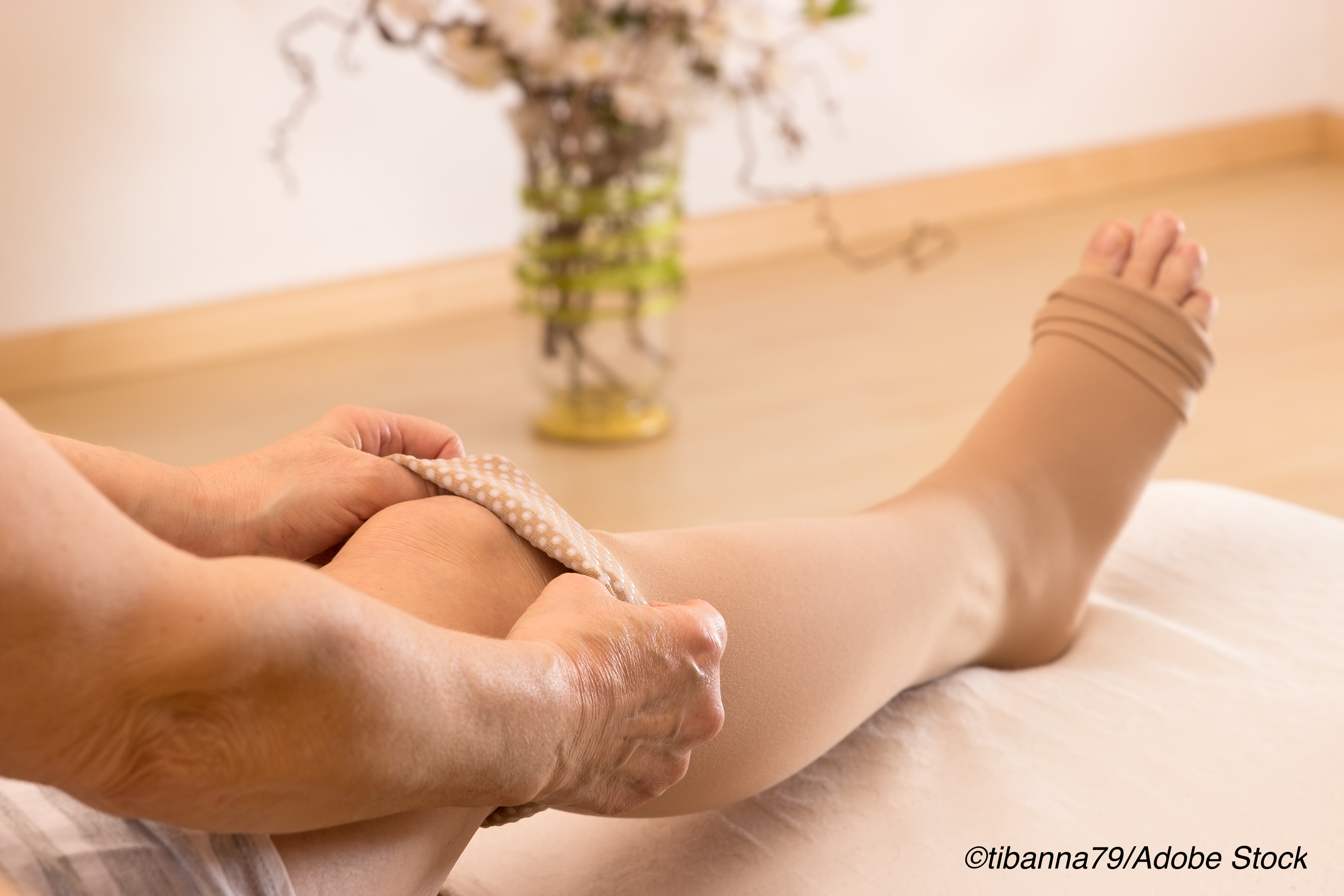
A single-center study by a team of Australian physical therapists suggested that a simple, non-medical intervention — leg compression therapy — may reduce the risk of recurrent cellulitis.
Elizabeth Webb, MPH, of the Physiotherapy Department at Calvary Public Hospital Bruce, Canberra, Australia, and colleagues, compared leg compression therapy plus education about cellulitis prevention to education alone in 84 chronic cellulitis patients and found that compression therapy reduced the absolute number of cellulitis episodes by 73% and the relative risk of cellulitis by 63%. Their findings were published in The New England Journal of Medicine.
Cellulitis, which is a common bacterial infection of the skin, carries a high risk of recurrence, as almost half of patients are likely to have a recurrent episode within three years. Penicillin is used for prophylaxis, but its benefit “diminishes progressively once the antibiotic agent is discontinued,” Webb and colleagues wrote.
For their study, the researchers recruited participants who had at least two episodes of cellulitis in the same leg in the two years prior to enrollment or who had “edema lasting longer than 3 months in one or both legs, with recurrent cellulitis.”
Edema severity, leg shape, skin condition, and ease of wear (putting on and taking off) determined the compression garment prescribed. “If chronic edema was present in both legs, compression therapy was provided for both legs. Replacement of compression garments was recommended after 6 to 12 months of wear, with no restrictions on the brand used,” the study authors explained.
Of the 183 patients screened, 84 were enrolled and randomized 1:1 to the compression intervention (n=41) or the control group (n=43) from June 2017 through February 2019. The trial was stopped for efficacy on March 26, 2019, and the data monitoring committee “recommended that crossover should commence to provide participants in the control group with compression therapy,” the study authors explained.
Among the findings:
- Six out of 41 patients in the compression group had recurrence of cellulitis (15%).
- 17 out of 43 patients in the control group had recurrence of cellulitis (40%).
- The HR for recurrence of cellulitis in the compression group was 0.23 (95% CI 0.09-0.59; P =0.002).
- Three participants in the compression group and six in the control group were hospitalized for cellulitis.
- At 12 months, mean leg volume in the compression group declined by 181 ml from baseline; meanwhile, in the control group, mean leg volume increased 60 ml from baseline.
At 12 months, quality of life scores were better in the compression group than the control group, they found.
“Because the proportional-hazards assumption was not met, relative risk was calculated post hoc. The relative risk was 0.37 (95% CI, 0.16 to 0.84; P=0.02), favoring the compression group,” Webb and colleagues wrote.
The authors noted that a Cochran review concluded that antibiotic therapy is the only effective prophylaxis for recurrent cellulitis, but patients with multiple recurrences as well as obese patients are less likely to benefit from antibiotics. “All participants in our trial had one or more risk factors that are predictive of antibiotic prophylaxis failure: all had preexisting edema, 79% had a BMI of 33 or greater, and 26% had had three or more episodes of cellulitis in the 2 years before the trial,” they noted. Thus, the majority of patients in the compression study were at risk for failure of antibiotic prophylaxis — yet, they benefited from the compression intervention.
The researchers acknowledged that it is not known why compression therapy is beneficial in cellulitis, but they theorized that it “could potentially decrease the risk of cellulitis by lessening edema, improving immune response and skin integrity, and providing physical protection for the skin. Future studies could explore the role of these mechanisms in cellulitis associated with chronic edema of the leg.”
Since both the “assessors and participants” were well-aware of trial group assignments, there was a potential for bias in this study. Additional limitations included the trial’s small size, single-center design, and brief follow-up.
-
Be aware that in this trial, which was halted early due to efficacy, use of compression garments reduced the risk of cellulitis recurrence.
-
Compression therapy, though effective in this small trial, requires additional study in larger, more diverse populations.
Peggy Peck, Editor-in-Chief, BreakingMED™
Webb had no disclosures.
Cat ID: 925
Topic ID: 915,925,105,190,192,925


